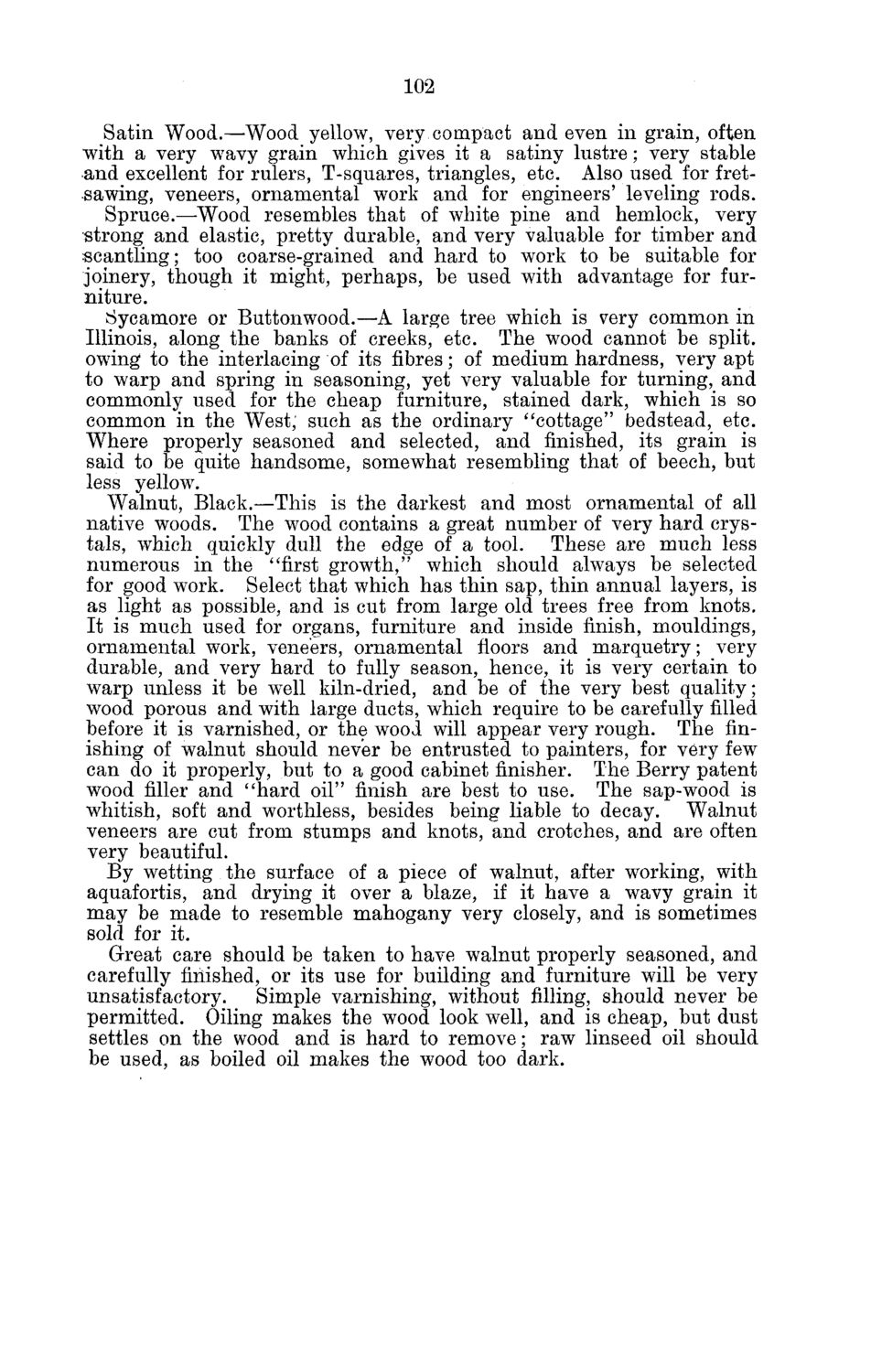| |
| |
Caption: Board of Trustees Minutes - 1880
This is a reduced-resolution page image for fast online browsing.

EXTRACTED TEXT FROM PAGE:
102 Satin Wood.—Wood yellow, very compact and even in grain, often with a very wavy grain which gives it a satiny lustre; very stable and excellent for rulers, T-squares, triangles, etc. Also used for frethawing, veneers, ornamental work and for engineers' leveling rods. Spruce.—Wood resembles that of white pine and hemlock, very strong and elastic, pretty durable, and very valuable for timber and scantling; too coarse-grained and hard to work to be suitable for joinery, though it might, perhaps, be used with advantage for furniture. Sycamore or Buttonwood.—A large tree which is very common in Illinois, along the banks of creeks, etc. The wood cannot be split, owing to the interlacing of its fibres; of medium hardness, very apt to warp and spring in seasoning, yet very valuable for turning, and commonly used for the cheap furniture, stained dark, which is so common in the West; such as the ordinary "cottage" bedstead, etc. Where properly seasoned and selected, and finished, its grain is said to be quite handsome, somewhat resembling that of beech, but less yellow. Walnut, Black.—This is the darkest and most ornamental of all native woods. The wood contains a great number of very hard crystals, which quickly dull the edge of a tool. These are much less numerous in the "first growth," which should always be selected for good work. Select that which has thin sap, thin annual layers, is as light as possible, and is cut from large old trees free from knots. It is much used for organs, furniture and inside finish, mouldings, ornamental work, veneers, ornamental floors and marquetry; very durable, and very hard to fully season, hence, it is very certain to warp unless it be well kiln-dried, and be of the very best quality; wood porous and with large ducts, which require to be carefully filled before it is varnished, or the wood will appear very rough. The finishing of walnut should never be entrusted to painters, for very few can do it properly, but to a good cabinet finisher. The Berry patent wood filler and "hard oil" finish are best to use. The sap-wood is whitish, soft and worthless, besides being liable to decay. Walnut veneers are cut from stumps and knots, and crotches, and are often very beautiful. By wetting the surface of a piece of walnut, after working, with aquafortis, and drying it over a blaze, if it have a wavy grain it may be made to resemble mahogany very closely, and is sometimes sold for it. Great care should be taken to have walnut properly seasoned, and carefully finished, or its use for building and furniture will be very unsatisfactory. Simple varnishing, without filling, should never be permitted. Oiling makes the wood look well, and is cheap, but dust settles on the wood and is hard to remove; raw linseed oil should be used, as boiled oil makes the wood too dark.
| |